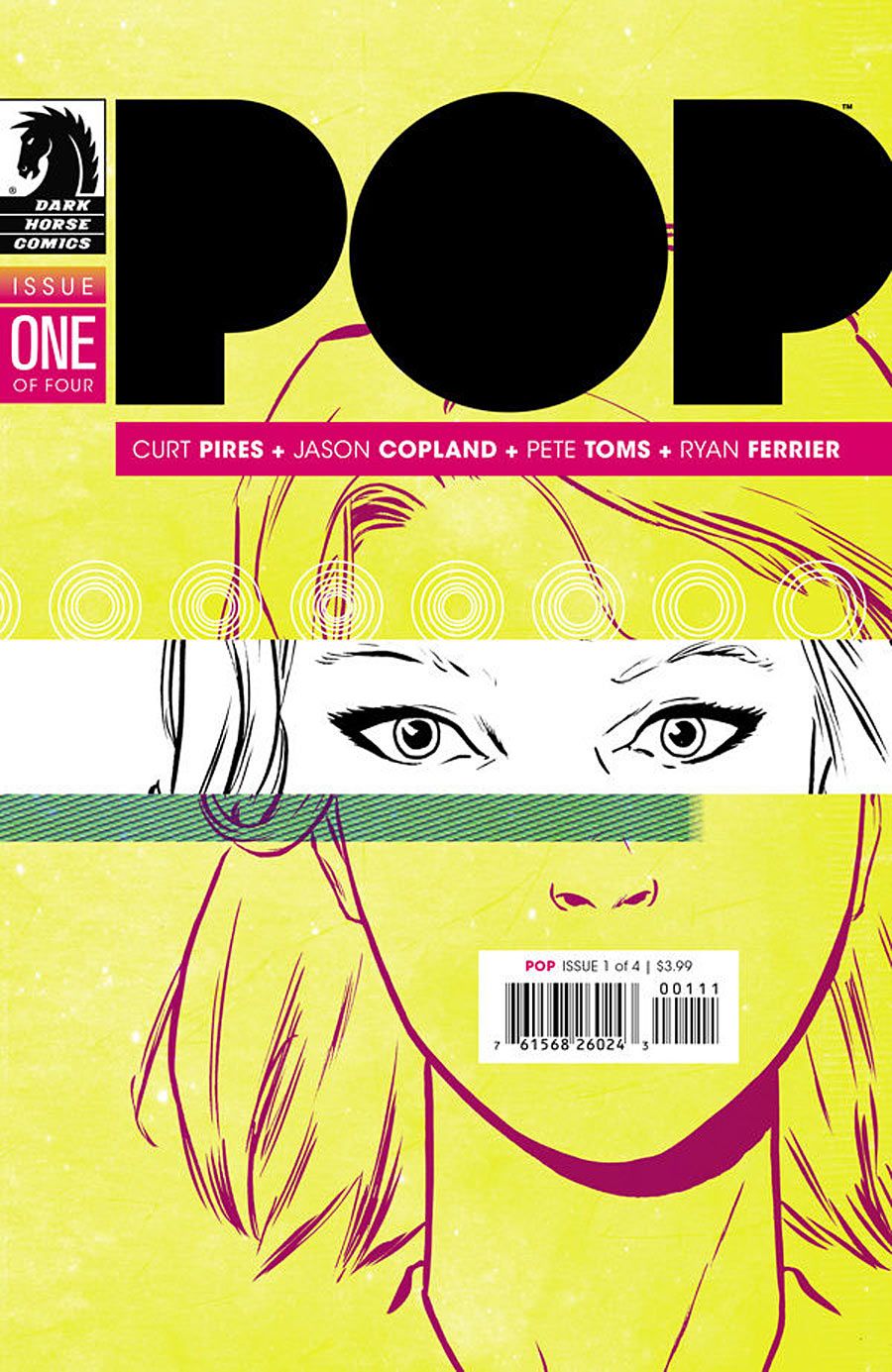The first in a four-part miniseries, Curt Pires and Jason Copland's "POP" #1 is an entertaining stew of cool ideas and social critique that can't decide what to do with its material. Where it's inventive, it's also derivative; where it's sly, it's also heavy-handed. Jason Copland and Pete Toms offer up a funky look and feel, but Curt Pires' story is unfortunately uneven. First issues often suffer similar inconsistencies of tone, and I've been convinced to pick up issue #2, but "Pop" #1 is something of a mixed bag.
"POP" takes place in a world like our own, except that corporations actually grow and own the pop stars they promote and profit from. Pires' premise extends the logic of capitalism to a dehumanizing extreme, and he gets right to the bitter, nihilist sprit of that logic in the first page. In a 4x4 sequence of snapshots from Copland -- drug use, concerts, decontextualized and commodified torsos -- Pires lays out a vicious perspective on consumer culture and celebrity. As a thesis statement, it's brilliant.
However, this is a story, not a manifesto, and from a story perspective, "POP" has to do some tweaking. The only character given any humanity is Coop, the suicidal comics collector who serves as the narrator. Escaped pop star Elle Ray, who crashes into him after fleeing her 'biowomb,' doesn't say anything unless it's to plead for help or express gratitude upon receiving that help. This is not an encouraging introduction for her, and it makes me worry that she'll be a vessel for Coop's development rather than a person. The villains are also one-dimensional, though the two enforcers and the technicians are self- and genre-aware enough to make me smile.
Copland's art, though, is consistent and cool. His style is a mix of grungy and goofy, perfect for a series where a corporate enforcer kneecaps teenagers, but said enforcer still wears fishnets. Pete Toms achieves a similar mix on colors, mostly painting the city in muted browns, but adding Warhol pops of color.
The layouts might have been my favorite element, though. They're myopic and layered, with stacks of smaller, zeroed-in panels that help the reader to feel Elle Ray's paranoia. I immediately recognized one page as a dream sequence, not because of any obvious visual cue, but because the panels were so wide and warm. They looked so unlike the 'real world' that Elle and Coop inhabit otherwise.
Artwork aside, the story veers from narrative and thematic sharpness to broad, all-too-obvious gestures. For instance, in the second half of the issue, Pires zeroes in on the easiest of pop culture punching bags: Justin Bieber. This isn't a terrible story choice, but it's emblematic of the tiredness that keeps "POP" from really excelling. When offering a critique of pop culture, one wants to avoid those that Perez Hilton has already made. That scene felt like a missed opportunity, especially given that the enforcers involved are rather interesting.
All told, "POP" is a perplexing first issue that's given me as much cause for excitement as cause for concern. Depending on how it moves forward, it could develop into something quite interesting, but it needs its story to rise to its ideas.

